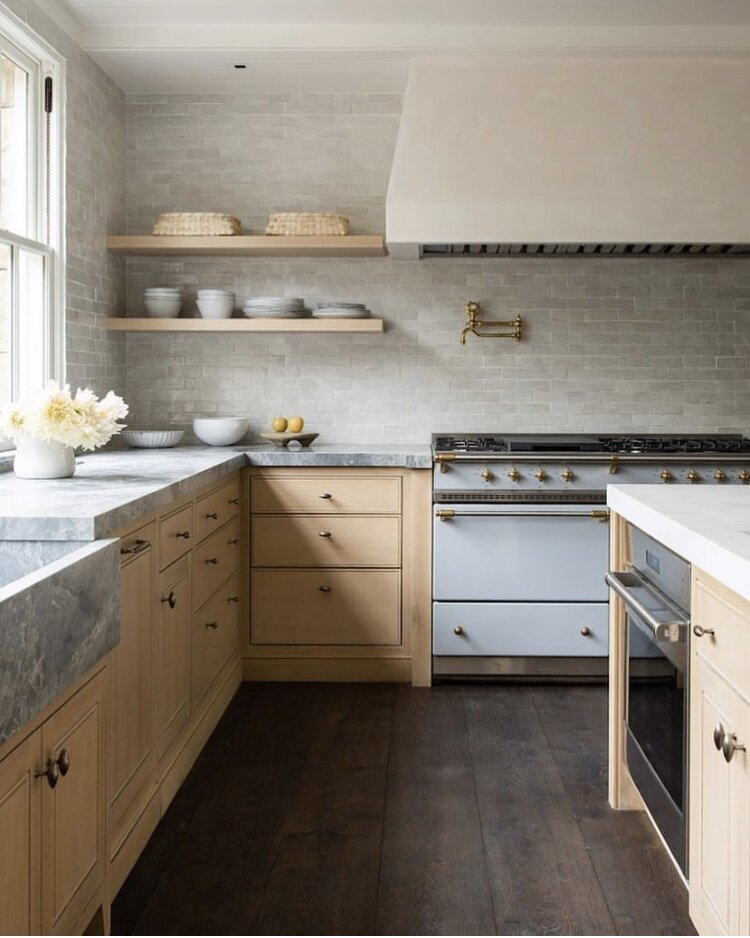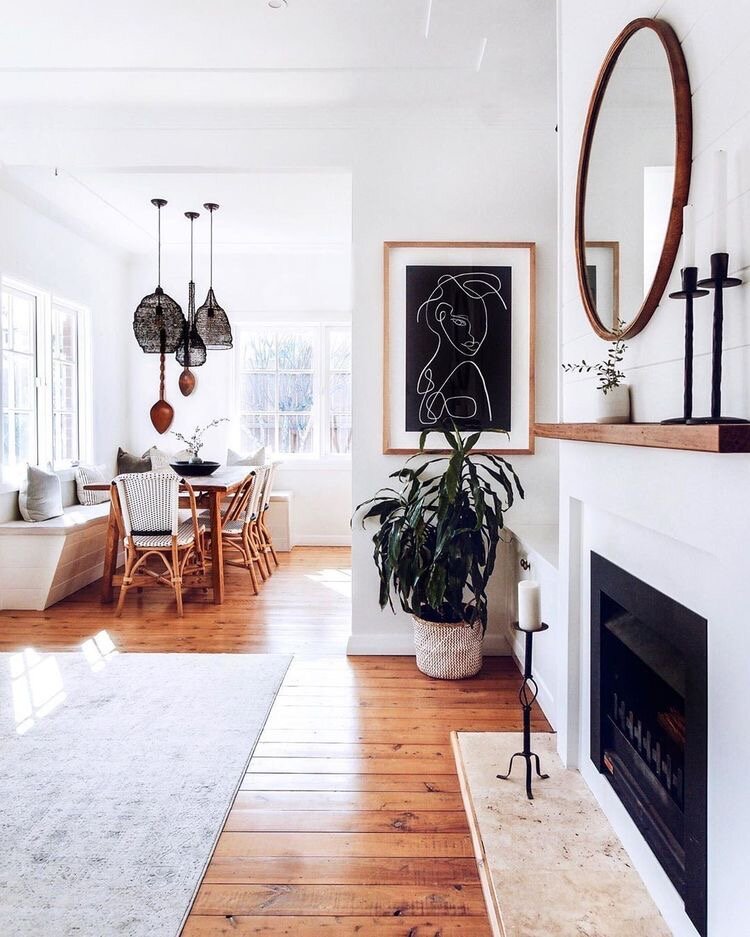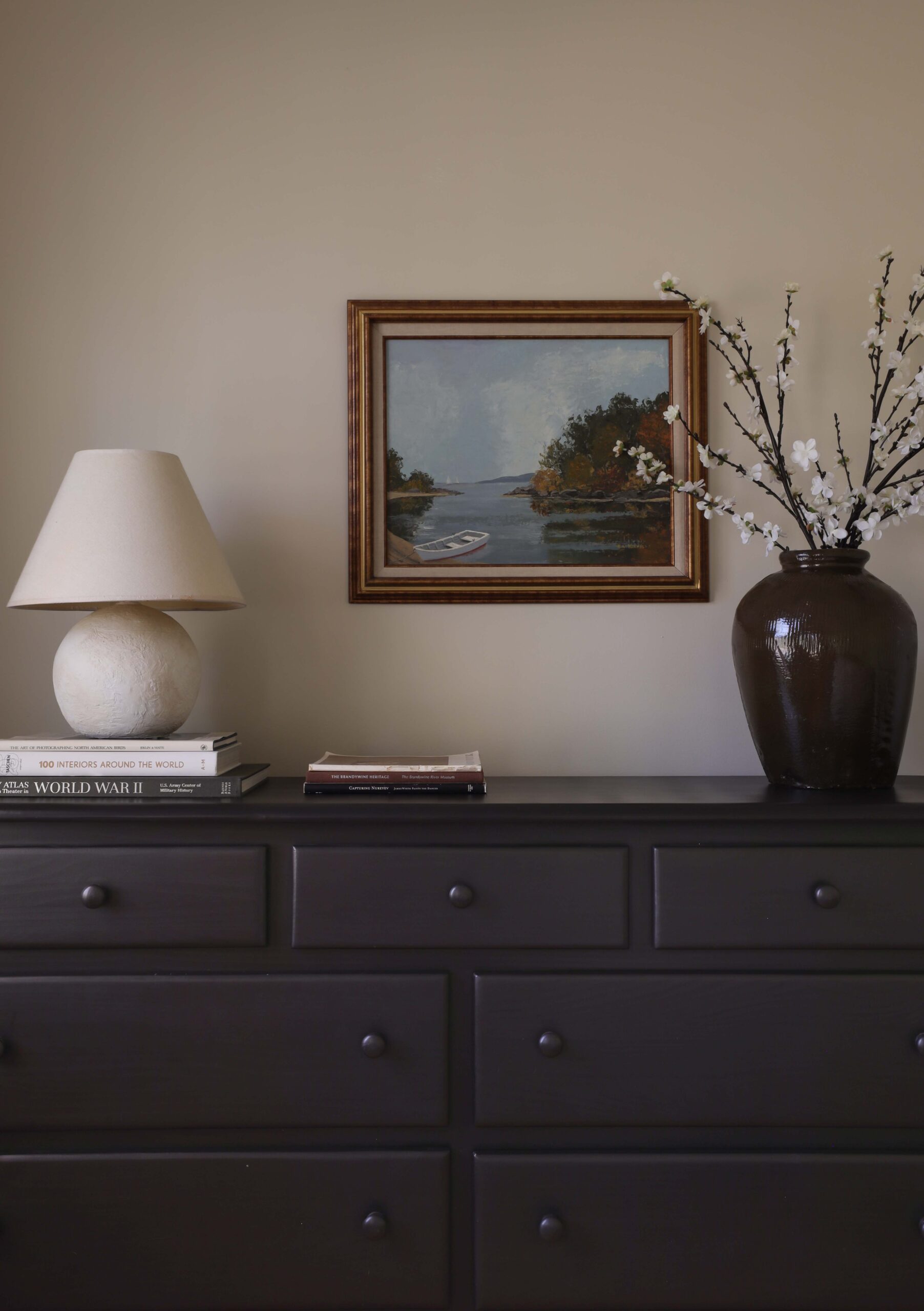Today I’m learning with you guys about the art of mixing wood tones within your home.
I’ll be honest, figuring how to mix a variety of wood tones in a home is one of the more challenging design skill sets to learn! Even professionals can struggle with this. Unless you are very intentional about only using the same wood species, stain color, and finish on your floors, dining table, chairs, and home decor, you’re bound to deal with different wood colors in your home.
So how do you make sure you’re mixing wood tones that blend well with each other? I did some research and here’s what I learned –
01 – PICK A MAIN TONE
As with every aspect of design, you need a starting point. Inevitably you’ll have more than one color or tone of wood in your home, but most likely you’ll have one tone that stands out or is used more frequently than others. Often times that may be your wood floors or your wood kitchen cabinets. Whatever it is, pick one tone that will be the main color throughout your space.
Photography by Devon Banks for Denise Lee Architect.
02 – DECIPHER THE UNDERTONE
Next, you’ll need to decipher the undertone of your main tone. It either has a warm tone or a cool tone. The best way to describe the difference between warm tones and cool tones is that warm wood tends to look more red, orange, or yellow (as seen in the first photo above). Cool undertones tend to look slightly gray (as seen on the dresser in the second photo above). Whatever the undertone, all additional wood colors or species that you incorporate in your home should have the same undertone.
03 – STICK TO 2-3 TONES
In order to keep your house from looking too scattered, stick to a maximum of 2-3 wood tones throughout your house. Any more than that and it can start to look unorganized.
04 – GO FOR CONTRAST
When in doubt, go for contrast. Two different tones that are similar in color but still slightly different can easily clash with one another. For example, wood kitchen cabinets and wood floors are always difficult to determine what’s best. Rather than trying to match your wood floors to your wood cabinets, it may be easier to have a contrast combination such as white oak cabinets and dark oak/pine wood floors.
05 – USE EACH TONE MORE THAN ONCE IN EACH ROOM
If you bought a walnut coffee table for your living room, use walnut again in the same room to ensure it feels intentional! You don’t want one wood tone to stick out like a sore thumb and the best way to avoid that is by using each wood tone more than once within each room of your home. The photo above is a perfect example – dark wood is seen on the cabinet, wood trim, and side table, medium toned wood is seen in the coffee table and accent chair, and light wood is seen in the floors and legs of the couch. Each tone has a double!
Source Unknown
06 – FLOORS + CEILING BEAMS SHOULD MATCH
A general rule of thumb is to make your wood floors and ceiling beams match. A light wood floor and dark wood beams can look unbalanced or top heavy. Sandwich your room with the same wood tone and incorporate a mix of other tones in between.
07 – USE RUGS AS A BUFFER
If you still aren’t sure how well your wood tones are blending, use a rug as a buffer. No matter how well two wood tones blend or compliment each other, wood on wood will get washed out. Rugs are an excellent way to break up your wood floors from the wood legs on your accent chairs, desk, etc.
Leave a Reply Cancel reply
DO YOU WANT
The Inside Scoop
Where behind the scenes, exclusive advice, and candid conversations are sent straight to your inbox every week.











Clearly stated and excellent examples! Thank you!
Will natural western cedar beams work with medium brown hickory floors
thank you enjoyed your post
I’m so glad! 🙂